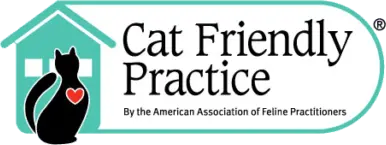Lacerations, Scrapes, Bites, Wound Repair, and More
If your furry friend gets a wound, how do you know whether to manage it at home or bring them for a veterinary visit? How do you clean a wound? And, what can you put on a wound to help it heal faster?
These questions may run through your mind when faced with a scrape, cut, burn, bite, or any other type of wound. When in doubt, it’s always best to seek veterinary care. But, here are a few important things to know about wounds in pets…
Common types of wounds in dogs and cats, and how they happen
Common wounds in pets can include:
- Scrapes
- Cuts
- Burns
- Bites from other animals
- Abscesses
- Hot spots (red, raw-looking patches caused by excessive licking)
- Broken toenails
The type of wounds that could happen depend a lot on your pet’s lifestyle—for example, whether they’re indoor or outdoor, whether they’re around other animals, etc. Here are some common ways in which dogs and cats can be injured:
- During outdoor play, due to hazards on the ground or underwater.
- Bites caused by another animal—most commonly with cats who roam outdoors, dogs at dog parks, etc.
- Burns from walking on hot sidewalks or due to kitchen appliances
- Scrapes and abrasions as a result of a fall or being hit by a car.
- Getting a toenail stuck on something.
- Self-inflicted wounds caused by allergies or anxiety, leading to a “hot spot.”
If it happens to your buddy, don’t feel bad—accidents can happen even when pets are well-monitored. However, it’s important that they receive appropriate, prompt wound care.
Does my pet’s wound need veterinary care?
Some wounds—especially shallow, minor cuts and scrapes—can be managed at home, if you have some experience and your pet allows you to examine and clean the wound.
If you haven’t treated a wound in a pet before, or if there’s any doubt as to whether you need veterinary care, it’s best to err on the side of caution and bring your pal to a veterinarian. Here are a few reasons why…
- Sometimes, the part of the wound you see is the “tip of the iceberg,” and the full wound goes deeper and needs more involved care. This is especially common with bite or puncture wounds.
- If your pet is painful, they might not let you clean the wound fully. A veterinary team can provide safe pain management and a thorough cleaning.
- You’ll need to know whether or not an ointment or cream is recommended for that particular wound, and if so, which ones can be used safely.
- The wound may need extra protection and application of a padded bandage.
And of course, if at any time a wound isn’t healing or is getting worse, you’ll want to seek veterinary care ASAP.
How are wounds treated in pets?
As you can imagine, the specific plan will vary depending on the needs of your pet. Here are a few common parts of a wound treatment protocol:
- Cleaning the wound. This is very important right after the wound happens, and might need to be repeated during the healing process.
- Preventing or treating infection. This may be done with oral antibiotics, topical ointments and sprays, or both.
- Managing pain. This may involve sedation to clean a painful wound, oral medications, or even certain topical creams. (Remember, some human pain medications are toxic to pets, so never give medications at home without checking with the vet first.)
- Sutures (stitches), if needed.
- Allowing drainage. Some wounds might need to drain to prevent an infection. This could mean leaving the area uncovered, or surgically placing a draining tube that stays in place for a few days.
- Protecting the wound. This often involves a bandage and an Elizabethan collar to prevent your pal from licking the wound.
With any care plan, be sure to monitor the wound, and follow up with recheck veterinary visits. That way, you can be sure the wound is healing as planned, and that your buddy will get back to their normal self as quickly as possible.
Preventing wounds
An ounce of prevention is worth a pound of cure. Here are a few measures you can take to decrease the chances of a wound occurring…
- Keep your pet indoors and supervise them when they’re outside—don’t let them roam freely.
- For dog parks, be observant of who else is there. If in doubt about any of the other dogs, it may be best to leave and return another day.
- Know your pet’s whereabouts while you are cooking.
- Keep your dog or cat away from things like power tools and paper shredders.
- Consider dog booties to protect your dog’s paws during walks, especially when it’s very hot or cold outside.
- Keep their toenails trimmed, so the nails are less likely to get stuck on something and break.
- Monitor for allergies, itching, and licking.
If your pet develops a wound after hours, there are urgent care veterinarians available near you, open nights, weekends, and holidays. That way, your pet doesn’t have to wait until morning to feel better, and you’ll both have a much more peaceful night. UrgentVet.com provides after hours vet care in Westchase, FL, Belmont, NC, and Fort Mill, SC. They have new locations opening soon.





